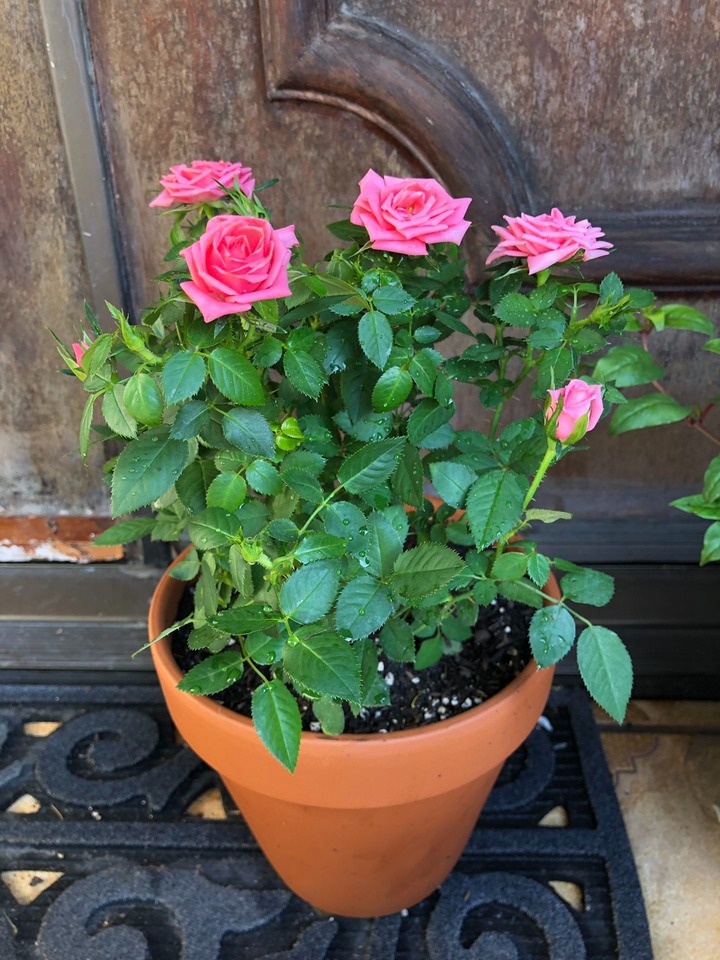Roses are beloved for their timeless beauty, enchanting fragrance, and a wide variety of colors and forms. Growing them in pots allows you to enjoy these stunning flowers even if you’re limited on space, whether it’s a small garden, balcony, or patio. However, roses can be finicky when grown in containers, presenting unique challenges that might leave even experienced gardeners puzzled. From inadequate drainage and nutrient deficiencies to pest infestations and diseases, there are several common issues that can arise.
In this article, we’ll share the 6 most frequent problems you may encounter when growing roses in pots, along with practical solutions to help you overcome them. Whether you’re a seasoned green thumb or just starting your container gardening journey, these tips will ensure your potted roses remain healthy, vibrant, and bloom beautifully throughout the season.
1. Watering

When growing rose in containers or pots, they need more frequent watering than garden roses because their soil dries out faster, especially in warm weather. Changes in moisture levels can stress the plant, causing leaves to fall off and buds not to bloom. However, don’t water them too much! Roses do not like being overwatered, and too much moisture will harm the plant.
The best way to water is to do it when the topsoil feels slightly dry to the touch, about 1/2 an inch deep. This might be every 2-5 days, depending on the weather. This way, your roses will be happy, healthy, and blooming!
2. Nutrition

If roses are grown in small spaces like pots and containers, the soil can lose nutrients quickly because there isn’t much soil. To solve this, add a handful of manure and compost to the pot every month. Make sure to mix it well to help your rose plants grow.
You can also use Epsom salt to help the roses flower beautifully. Simply, dissolve one tablespoon in a gallon of water. Use this solution to water the soil once a month.
Additionally, use a balanced liquid fertilizer, dilute it to half-strength, and apply it every 4-6 weeks. This will give the roses the nutrients they need to produce the best flowers.
3. Sunlight

Roses prefer sunlight, but too much can burn their leaves, especially in warm areas. The best place is an East or South facing spot to grow this beautiful flower.
An East facing location gives them a gentle morning sun, which provides the right amount of light throughout the day. For a South facing spot, you might need curtains to block the strong afternoon sun.
Any window, balcony, or area that faces East in your home or garden is ideal for rose pots. This way, they will thrive without any issues! That’s why you should move your rose pots regularly instead of leaving them in one spot.
4. Diseases and Pests

Powdery mildew and spider mites are common rose diseases when you grow them in limited spaces like pots and containers, especially if there isn’t enough air circulation.
Aphids and leafhoppers also love roses and can spread fast, causing a lot of damage. To prevent this, ensure your plant gets good air circulation. Prune crossing branches and remove dead flowers regularly. Check your plants often for early signs of pests or diseases. If the infestation is severe, use insecticidal soap.
5. Soil

Using a potting mix that drains well is one of the most important things if you want to grow roses because pots and containers don’t allow for good air circulation to the soil.
For growing roses in containers, you should use three parts garden soil, two parts compost, one part coarse sand, one part perlite, and half part bone meal. Then mix them well, and you’ll have healthy plants and beautiful flowers!
6. Root Space

When grown in the garden, your rose plants will have plenty of space to spread out. But in pots, their roots will be limited because of the small space. For happy growth, you need to find the right pot size. A pot that’s 12-16 inches wide is great to start growing and will work well for the next years.
Let them grow in this pot until you see roots coming out of the topsoil or through the drainage hole. This means the plant has outgrown its pot and needs to be re-potted.
If you re-potting, don’t use a pot more than 1-2 sizes bigger than the old one to avoid overwatering. Also, always use fresh potting mix each time you re-pot.

